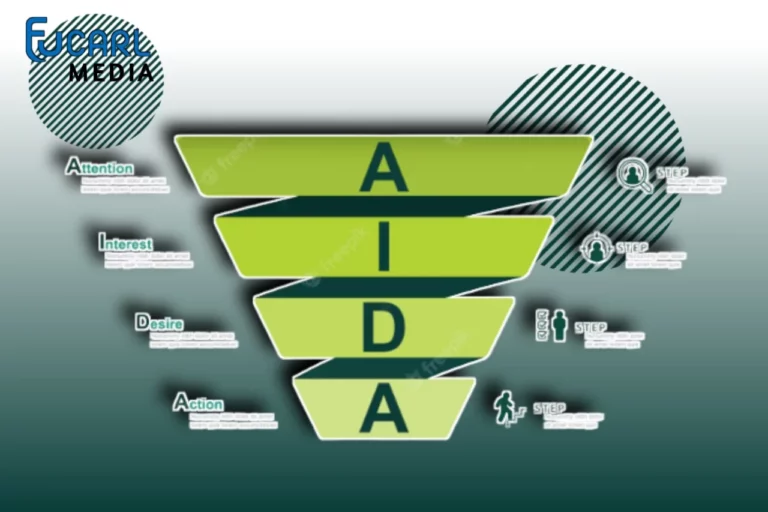Steps to Creating a Marketing Budget for Your Business
When defining the budget for each area of the organization, the Marketing Budget for Your Business allows you to foresee the approximate amount you should spend to promote your brand, products, or services.
It takes a strategy to grow. If you don’t want to see your company wasting resources, spending more than you can, or prioritizing the wrong actions, it’s imperative to plan how your money will be invested. That’s what the budget is for: stipulating what percentage of total resources will be applied to each business sector. And the marketing budget is one of its fundamental steps.
The marketing budget goes hand in hand with your company’s communication strategy. It allows you to reach or exceed the goals set to reach and connect with your target audience. Without considering it, you invest money without focus and have no way of evaluating what went right and what can be improved in terms of brand awareness.
Maybe you are thinking “but I already made the budget for my business when I started the company, also for the Marketing sector”. But time passes and it is necessary to adapt: flexible – but organized – planning makes all the difference.

Steps to Creating a Marketing Budget for Your Business
In this article, you will learn how the marketing budget facilitates the growth of your business, you will understand how companies plan the annual budget and you will also discover how the forecast maneuver adjusts your business budget whenever necessary.
Follow us to improve your financial strategy!
What is Budget
A Marketing Budget for Your Business is a continuous-use tool that allows you to define in advance, based on your total budget, the percentage of money that will be applied in each sector of your business: Human Resources, IT, Sales, and Product Development, among others. other sectors, Marketing.
Although the Marketing Budget for Your Business can be used to define the budget for the short, medium, or long term, it is usually drawn up on an annual basis. Thus, it stipulates all costs that are forecast for the period of one year. As unforeseen events happen, the budget must leave room for budget adjustments to be made – we will talk about this maneuver later.
See below how to separate the budget between the areas of your organization:
Planning x Budget
Just as you shouldn’t spend money you don’t have, executing without planning doesn’t yield results: adjust your plans to the available Marketing Budget for Your Business and build a strategy so you don’t waste resources. It is also necessary to take into account fixed costs, variable costs, expected income, and the possibility of indebtedness.
Be prepared for the best and the worst
Over the course of a year, your revenues can grow, decrease or maintain the same level: assess the current moment and make sure you have the resources to pay the company’s essential expenses, in the worst-case scenario, or deal with the increase in demand, in the best scenario.
Set goals for each sector of the company
By defining the financial and productivity goals that each area of the business must achieve, it becomes easier to determine the amount that will be invested in each sector’s budget.
Monitor results and make corrections
The budget allows you to monitor and measure, based on the goals that have been established for each sector, whether the results were achieved or not, and whether your resources were correctly applied. So you can efficiently re-budget with every period change.
Marketing Budget
When it comes to defining the goals and budget for each sector, Marketing is one of the most important. It strengthens your brand, creates an experience that connects the customer with your business, and generates Leads. These are what will ultimately grow your revenue and budget.
It is vital, therefore, to set aside an amount to be invested ineffective marketing tools.
Inseparable from the communication strategy and the business’s own marketing planning, the marketing budget is the stage of budget definition that indicates what amount will be allocated to your company’s advertising activities. That includes:
- Ads and paid advertising ;
- Investment in tools;
- Events organization;
- Sponsorships;
- Hiring employees;
- Administration of social networks;
- Printing of graphic material;
- Other marketing investments that make your company sell more and earn better.
So that there are no conflicts between business expenses, all these actions must have a specific and predetermined budget for their execution. In other words, the marketing budget.
There are different metrics that can be used as a basis for defining the marketing budget. Nielsen’s Law, for example, dictates that the investment in marketing must correspond to the market share that one wants to conquer – thus, to obtain 20% of the market, it would be necessary to invest 20% of the budget in marketing.
The American Small Business Agency (SBA), in turn, recommends investing between 7% and 8% of the total revenue of companies in marketing. Others say that the idea is to allocate 15% of the budget to the marketing budget.
The truth is, you must find the ideal value for marketing your business by customizing the plan to your goals and needs.
Step By Step to Define The Marketing Budget
Check out a step-by-step guide on how to set Marketing Budget for Your Business below:
Step 1: Determine your total budget
For starters, you should make an accurate estimate of what your total budget will be throughout the year. To do this, assess the amount of money you spent in the previous year, how much you earned, the profit estimates for this year, and decide which areas of the company will receive new investments.
Step 2: Set a goal for your marketing actions
You must look at how your company is positioned and where it wants to go. The idea is to strengthen your image in the market, Attract more customers, and increase sales volume. That’s why the communication strategy is indistinguishable from the Marketing Budget for Your Business. The success of these goals requires investing in specific channels and means of communication for each one. This also helps you to target your investments.
Step 3: Choose Your Advert Channels
This step is the consequence of the previous step. After defining the goals you hope to achieve with your marketing actions, it’s time to choose the means and channels where your company’s marketing will be exposed. That’s where posts on social media, partnerships with influencers, paid ads on the internet, offline ads, etc. come in.
Step 4: Evaluate the Possibility of Having Marketing Automation Tools
Instead of leaving all the responsibility for marketing actions on your employees’ backs, you can achieve much more effective results using marketing automation tools – the most used Digital Marketing strategy in advanced markets.
Integrate your CRM and Digital Marketing tools, prepare your company for Leads and connect with your customers in an automatic and scalable way. So you pave the way for predictable growth!
Step 5: Monitor Your Company’s Marketing Performance
Closely monitoring the progress in promoting your brand and the numbers obtained is the best way to assess whether your marketing budget was well planned and executed. Here again, the use of marketing automation tools can be the key for you to simply and effectively monitor and evaluate your company’s performance.
None of this, however, should have an immutable character. As much as defining the budget helps to allocate funds to the right areas, the execution of these actions has surprises and unforeseen events. Most budgets need to be readjusted throughout the year – and that’s what the forecast is for.
To finish: Budget x Forecast
When making the annual budget, the most experienced companies seek to customize it and leave room for changes and adaptations. It is a maneuver called forecast, which is nothing more than the act of reviewing the budget and making adjustments when necessary.
Budget → Static and a usually an annual budget that stipulates how much will be invested in each sector of the company over the next period;
Forecast → Budget review of the budget is generally carried out on a monthly basis, which allows adjustments to be made in the allocation of funds according to the company’s performance throughout the year.
The idea of the forecast is to make it possible, with some adaptations and reallocation of the amounts defined in the annual budget, that the total budget that was initially forecast is respected at the end of the year and the company does not suffer losses or waste of resources.
This is an effective way to redefine budget planning that allows, for example, to increase investments in digital marketing and automation technologies when there is a need to reinforce brand awareness.
The Marketing Budget Should Focus on Predictable Growth
As we said, the fundamental role of the Marketing Budget for Your Business is to point out the allocation of resources for the company to generate more leads, attract more customers and make more sales. In this way, working well on the budget is essential to achieving predictable growth.






